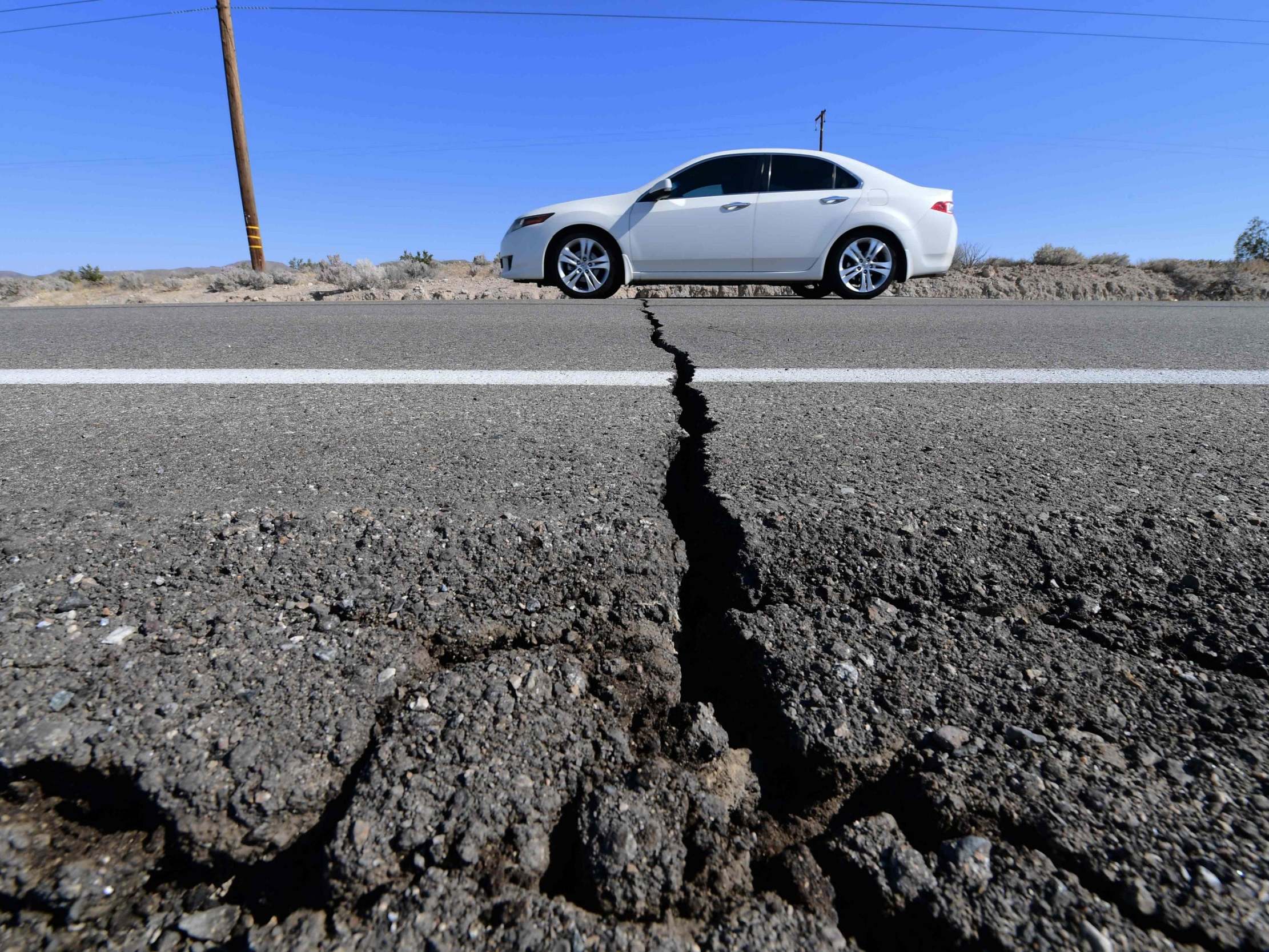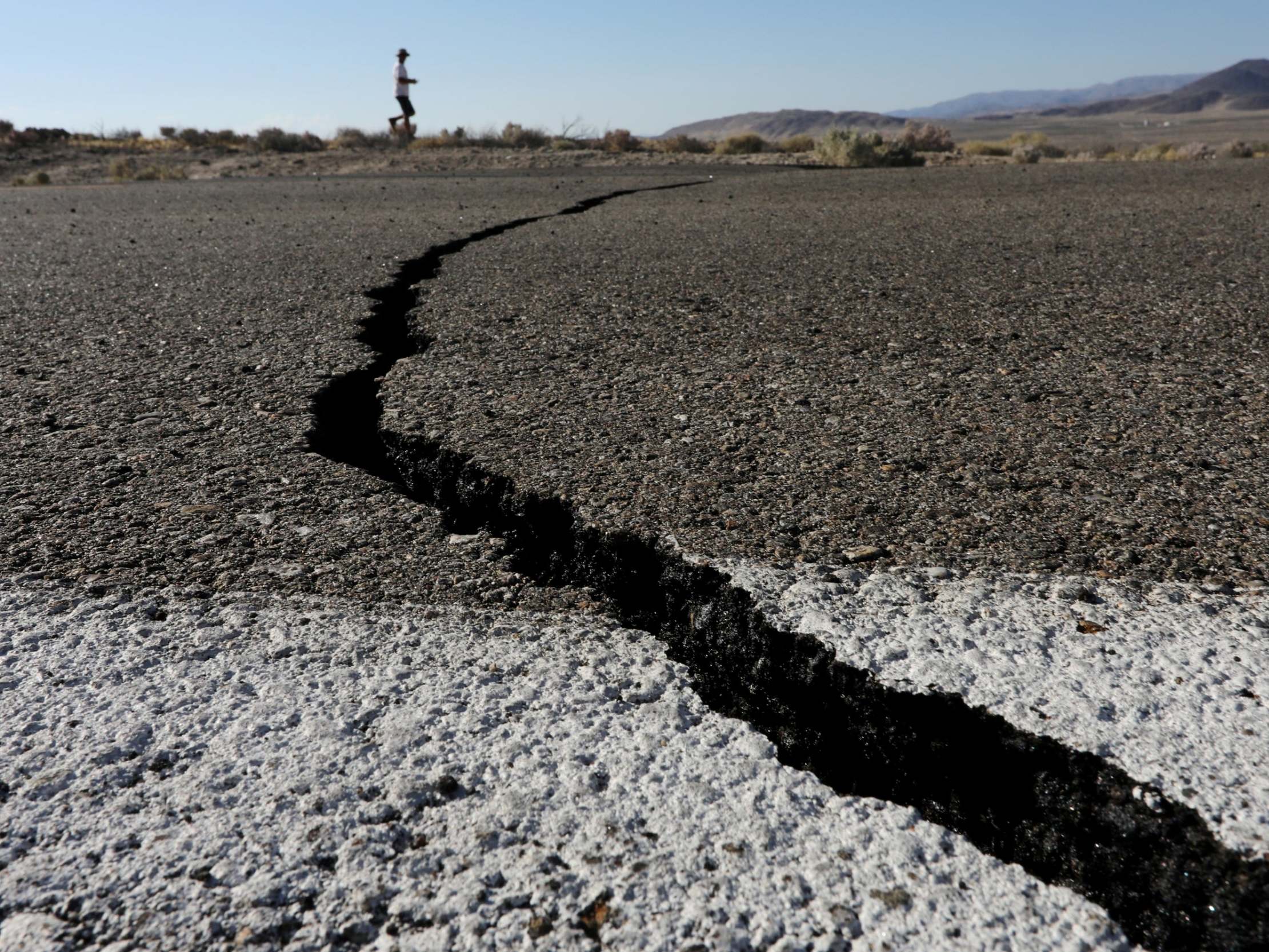California earthquake: Fears of imminent major quake grow after ‘swarmageddon’
‘We’re a close-knit community and everybody is working to take care of each other’
The strongest quake to hit Southern California in two decades years has brought fears an even bigger tremor is likely.
A 6.4 magnitude quake hit the US state at 10.30am on Thursday near the town of Ridgecrest, about 150 miles northeast of Los Angeles.
The large quake and subsequent aftershocks have rattled nerves, as well as causing injuries and damage in the town near the quake’s epicentre.
And as residents began picking up the pieces, experts have not ruled out the chance of another large shock of the same level or higher hitting in the next week.
The shallow tremor (only 6.7 miles deep) was felt in an area inhabited by 20 million people.
Only a few injuries were reported, but two houses were reported to have caught fire from broken gas pipes; water gushed from zigzagged cracks in the busted pavement; and deep fissures were seen snaking across the Mojave Desert.
In the immediate aftermath of the quake, California governor Gavin Newsom approved an emergency proclamation, and Ridgecrest mayor Peggy Breeden said she had declared a state of emergency, a step that enables the town to receive help from outside agencies.
Ms Breeden said she had asked residents to check on their neighbours in the desert town.
“We’re a close-knit community and everybody is working to take care of each other.”

President Donald Trump said he was fully briefed on the earthquake and that it “all seems to be very much under control!”
The following morning, as residents were still assessing the damage from the July 4 quake, a strong 5.4 magnitude quake struck 11 miles west of Searles Valley at 4.07am local time.
The initial 6.4 quake, which the United States Geological Survey estimated caused damage in the millions of dollars, came off the back of hundreds of “foreshocks” that rattled the region late last month.
It said the amount of quakes would decrease in the coming weeks – but there was still the risk of an even larger quake.
“USGS estimates a 9 per cent chance of one or more aftershocks of magnitude 6.4 or larger in the next week.”

USGS geophysicist Paul Caruso said the quake was the largest in Southern California since the 1994 magnitude 6.6 Northridge earthquake.
That quake, which was centred in a heavily populated area of Los Angeles, killed 57 people and caused billions of dollars of damage.
Additional reporting Associated Press and Reuters
Join our commenting forum
Join thought-provoking conversations, follow other Independent readers and see their replies
Comments
Bookmark popover
Removed from bookmarks